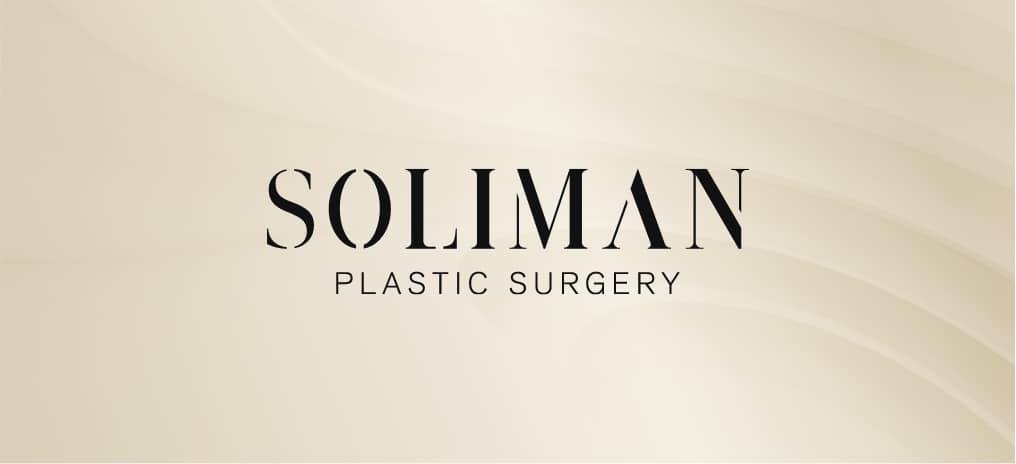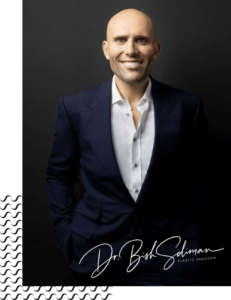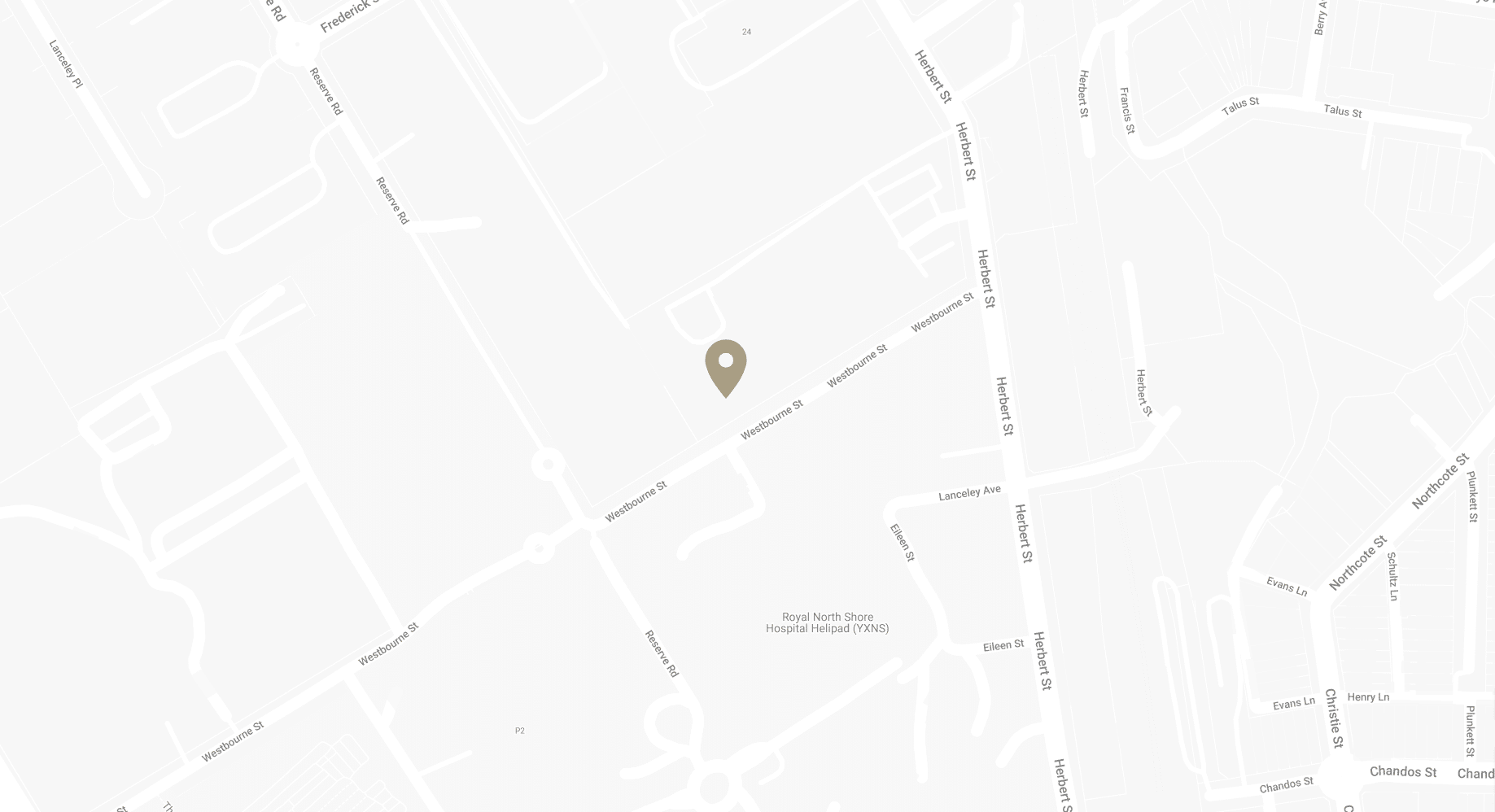Mastopexy Recovery Timeline and Tips
Breast lift surgery is a procedure that elevates and reshapes breasts affected by breast ptosis. Like any surgery, understanding the recovery process after breast lift is essential. From the initial days marked by noticeable changes and mild discomfort to the later stages where the body fully adjusts, it’s essential to be prepared and informed.
Specialist Plastic Surgeon Dr Bish Soliman performs both breast reconstruction and aesthetic breast surgery.
Download Dr Bish Soliman Cosmetic Breast Surgery Guide

Factors Influencing Recovery after Breast Lift Surgery
Breast lift surgery, or mastopexy, is a procedure that alters the appearance of the breasts by elevating and reshaping them. The recovery process, however, can vary widely from one individual to another. Several factors influence the speed and quality of recovery. Let’s explore these factors in detail:
The Surgical Method Used
- Periareolar Lift: A procedure where incisions are made only around the areola. With fewer incisions, the healing time may be slightly reduced
- Vertical or Lollipop Lift: Involves incisions around the areola and vertically down the breast. Recovery might be longer than with periareolar techniques
- Wise pattern or Anchor Lift: Involves incisions around the areolar, vertically down and under the breast. Recovery is similar to the vertical technique
Individual Health Conditions
- General Health: Those in good health, without chronic conditions, tend to recover faster. Diseases like diabetes can slow down the healing process
- Lifestyle: Non-smokers, and those who lead an active, healthy lifestyle, generally face fewer complications and recover more swiftly
Breast Lift Recovery Timeline
The recovery process after a breast lift surgery follows a general timeline. Each phase has its own characteristics, and understanding these can help patients navigate their recovery with more awareness and preparedness.
Week 1
- Pain and Sensitivity: It’s common to experience some degree of pain, tenderness, and sensitivity following the surgery. Pain management with prescribed medications is typical during this period
- Swelling and Bruising: Almost everyone will experience swelling and some bruising. Wearing the prescribed compression garment can help reduce these symptoms
- Incision Care: The surgical site must be kept clean to prevent infections. Following the guidelines for cleaning and possibly applying antibiotic ointments is necessary
- Limited Activities: Activities should be limited. Avoid bending over, lifting heavy objects, or any sudden movements that might strain the chest area
Week 2-4
- Reduced Swelling: The initial swelling starts to diminish, and patients can begin to see the initial results of the surgery
- Improved Mobility: Mobility generally improves, but it’s still essential to avoid strenuous exercises or activities that might exert pressure on the breasts
- Follow-up Appointments: Regular check-ups with Dr Bish Soliman and his nurse to monitor the healing process and answer any questions during this time
- Scar Care: Once the incisions have fully healed, patients might be advised to use certain products to minimise the appearance of scars
Month 1-3
- Shaping and Settling: The breasts continue to settle into their new shape. Though major swelling has subsided, minor swelling might persist
- Regular Activities: Most patients can resume regular activities, but it’s always a good idea to check with Dr Bish Soliman before engaging in rigorous physical activity
- Monitor Sensations: Some patients might notice changes in breast or nipple sensation. While it often returns over time, it’s essential to keep Dr Bish Soliman informed
- Protect from Sun: To prevent darkening of the scars, it’s advised to protect them from direct sunlight
3 months +
- Fully Settled Breasts: By this point, the breasts are mostly settled in their new position and shape
- Scar Maturation: Scars begin to fade and mature, turning from a reddish colour to a lighter, more skin-toned hue
- Regular Check-ups: Even though the major recovery phase is over, regular check-ups with Dr Bish Soliman and his nurse are beneficial to monitor the long-term results and health of the breasts
- Continuous Protection: The skin and scars remain sensitive, so continued protection from direct sunlight and potential trauma is advised
Tips for a Smooth Recovery after Mastopexy
A successful recovery post-mastopexy not only depends on the surgical procedure itself but also on how well one takes care of themselves during the recovery phase. The following are some effective tips to help ensure a smooth and hassle-free recovery after a breast lift.
Following Dr Bish Soliman’s advice
- Personalised Guidance: Every individual is unique, and thus, following Dr Bish Soliman’s specific advice tailored to one’s specific situation is vital
- Medication Adherence: Take all prescribed medications on time and for the full duration. This includes pain relievers and antibiotics to prevent infections
- Attend Follow-ups: Do not miss post-operative appointments. These are opportunities to assess healing and address any potential concerns
Prioritising rest
- Quality Sleep: Aim for 7-9 hours of sleep nightly. Sleep promotes healing and helps the body recover faster
- Comfortable Environment: Ensure that the sleeping area is comfortable, possibly with extra pillows to prop oneself up and reduce swelling
- Limited Activities: Refrain from engaging in any activity that feels strenuous or tiring, especially during the initial weeks
Monitoring and caring for incisions
- Daily Checks: Examine incision sites daily for signs of infections such as increased redness, warmth, or unusual discharge
- Avoid Direct Water: Initially, it might be advised to avoid direct water on the incisions. Use damp cloths or specific cleaning solutions as directed
- Moisturise and Protect: Once the incisions are fully healed, using a recommended moisturiser can help. Always protect the scars from the sun to prevent discolouration
Avoiding strenuous activities
- Gradual Resumption: Resume physical activities slowly and under the guidance of Dr Bish Soliman. Even if one feels good, it’s essential to be cautious
- Avoid Heavy Lifting: For 4 – 6 weeks post-surgery, avoid lifting anything heavy. This can put undue stress on the healing tissues
- Stay Active, Safely: While strenuous activities are off the table, light walks can promote circulation and aid in recovery
Eating a balanced diet
- Nutrient-rich Foods: Consume foods high in vitamins and minerals, particularly Vitamin C and zinc, which support healing
- Stay Hydrated: Drink plenty of water to help flush out toxins and support overall body functions
- Limit Salt and Sugar: Too much salt can exacerbate swelling, while excessive sugar can hinder the healing process. Be mindful of intake
Common Concerns and How to Address Them
Breast lift, like any surgical procedure, comes with its set of post-operative concerns. Recognising and addressing these concerns promptly can make the recovery smoother and more comfortable.
Swelling and bruising
- What to Expect: Some level of swelling and bruising is natural after the surgery and can vary in intensity from one person to another
- Management Tips:
- Cold Compress: Applying a cold compress in intervals can help reduce swelling. Ensure there’s a cloth barrier between the ice and the skin to prevent frostbite
- Elevation: Sleeping with the upper body slightly elevated can help reduce swelling
- Compression Garments: Wear the recommended compression garment consistently, as it helps control swelling and supports the healing tissues
- When to Seek Help: If swelling and bruising worsen significantly after the initial decrease or are accompanied by severe pain, it’s vital to contact your surgeon immediately
Pain and discomfort
- What to Expect: Mild to moderate pain and discomfort are standard in the first week post-surgery
- Management Tips:
- Medication: Follow Dr Bish Soliman’s advice regarding pain relief medications, and always take them as prescribed
- Rest: Ensure ample rest, especially in the initial days. Overexertion can increase pain and hinder the healing process
- When to Seek Help: If the pain becomes unbearable or doesn’t decrease with medication, contact the medical team promptly
Scarring
- What to Expect: Scarring is a natural part of the healing process, and the appearance of scars can vary based on individual skin types and the surgical technique used
- Management Tips:
- Scar Creams and Tapes: Once the incisions are fully healed, using scar creams or tapes can help improve the appearance and texture of scars
- Avoid Sun Exposure: Direct sunlight can darken fresh scars, making them more noticeable. Use sunscreen or protective clothing
- When to Seek Help: If a scar becomes raised, excessively itchy, or changes colour suddenly, it’s a good idea to consult with the surgeon
Changes in nipple sensation
- What to Expect: Some patients may experience altered sensation in the nipples, ranging from increased sensitivity to numbness
- Management Tips:
- Be Patient: In many cases, the change in sensation is temporary and gradually returns to normal over time
- Protect from Extreme Temperatures: Due to altered sensations, one might not immediately detect extreme hot or cold, which can lead to unintentional burns or frostbite. Be cautious
- When to Seek Help: If there’s no improvement over several months or if there are concerns about the lack of sensation, discussing it with Dr Bish Soliman is recommended
FAQs about Recovery after Breast Lift
How long will it take for me to fully recover from a breast lift?
- While most patients can return to non-strenuous activities within a week or two, full recovery and settling of the breasts can take several months. However, the timeline can vary based on individual healing rates and the specific surgical technique used.
Is it normal to experience pain and swelling post-surgery?
- Yes, experiencing some pain, swelling, and bruising after a breast lift is typical. These symptoms are most pronounced in the first week and generally subside over the following weeks. Pain relief medications can help manage discomfort.
When can I resume regular physical activities and exercise?
- Light activities can be resumed within a week or two, but it’s advised to wait 4-6 weeks before reintroducing more strenuous exercises. Always consult with Dr Bish Soliman before returning to your regular fitness routine.
What should I do to minimise scarring after the surgery?
- Once the incisions are fully healed, you can apply scar creams or tapes as recommended by Dr Bish Soliman. It’s also essential to protect scars from direct sunlight, as this can darken them. Over time, with proper care, scars will fade and become less noticeable.
Will there be permanent changes in nipple sensation?
- Some patients experience temporary changes in nipple sensation, either increased sensitivity or numbness. While sensations typically return to normal over several months, a small number of patients may experience long-term changes.
Further Reading about Breast Procedures with Dr Bish Soliman
- Read Dr Soliman’s Breast Augmentation Surgery Page
- Read Dr Soliman’s Breast Implant Removal Surgery Page
- Read Dr Soliman’s Breast Reduction Surgery Page
- Read Dr Soliman’s Breast Lift (Mastopexy) Surgery Page
- Read Dr Soliman’s Blog about Scars after Breast Reduction for Best Results
- Read Dr Soliman’s Blog about What Will My Scars Look Like after Breast Lift Surgery
- Read Dr Solimans’s Blog about Breast Lift Surgery Consultation: 5 Things To Know Before Meeting With Your Surgeon
Medical References about Breast Lift Recovery
- Breast Lift (Mastopexy): Surgery & Recovery – Cleveland Clinic
- Breast Lift – Mayo Clinic
- Mastopexy (Breast Lift Surgery) – WebMD
- Breast Lift – Australian Society of Plastic Surgeon
- Mastopexy (breast lift) – NHS



